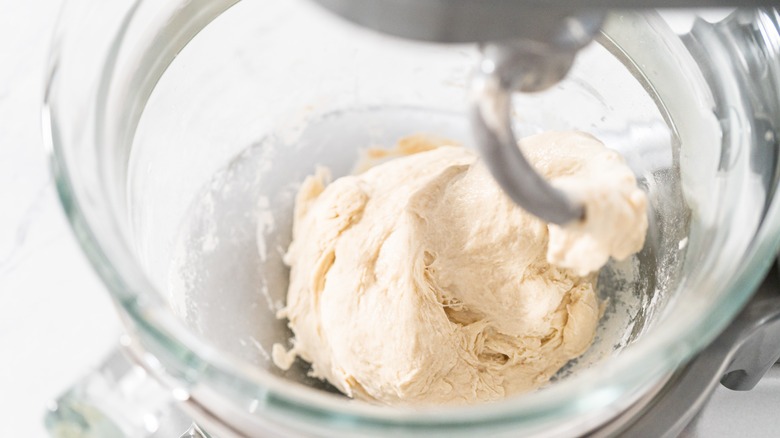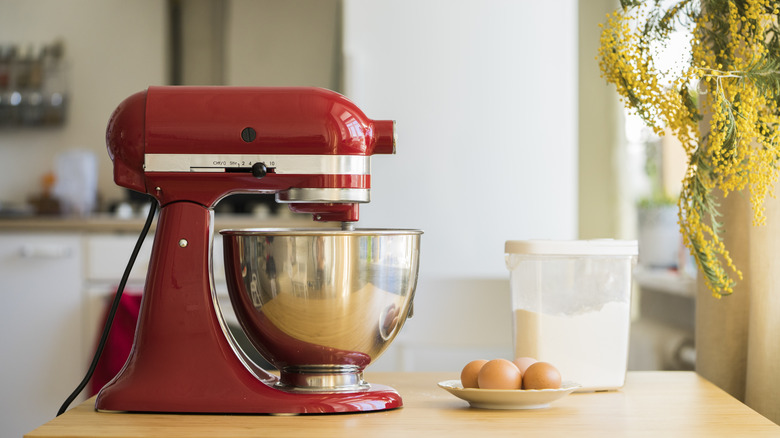Why You Should Mix Bread Dough On A Low Speed
Making bread dough with a stand mixer is one of the biggest upgrades in baking. Kneading by hand means dough that sticks to surfaces, but adding too much flour to make it easier to handle could make your bread dry and dense. Stand mixers with a dough hook cut down on effort and time, producing well-kneaded balls of dough that make bread just as tasty as anything done by hand.
Mixers by themselves aren't a stand-in for good bread knowledge, however. A mixer can work dough better than you ever could, but it can't tell you when it's done or what the texture should be. Useful kitchen implements are great, but they can also inspire a devil-may-care embrace of speed and convenience when a more restrained, low-speed use of your tool would actually be better. If you have a mixer and you're making bread, you might be inspired to crank it up to get quicker, better results, but there are actually a few different reasons why you should avoid higher speeds.
Bread dough can be taxing on a mixer at a high speed
High speed on your mixer is a lot of fun when you're making some whipped cream or beating eggs and sugar together. But what do those things have in common? They're light and fluffy. Most bread dough is just too sticky or stiff for high-speed settings on mixers. Trying to knead for minutes at a time at even medium speeds can be enough to push your stand mixer to its limit, causing it to overheat or break.
Generally, yeasted bread doughs should only be worked in your stand mixer on lower speed settings to avoid this. If you have a mixer or have just pined after one, you know they don't come cheap — and the last thing you want to do is damage it trying to save a few minutes on some bread.
Another reason to mix on low speed is that it's really easy to over-knead bread dough in a stand mixer. Kneading bread dough in a mixer can take as little as a third of the time making it by hand, even at lower settings. Higher-speed mixing can over-knead dough in minutes, which produces tough bread that won't expand well. Unlike dough that is under-kneaded, there is no coming back from overworked dough either; you've passed a point of no return. So take it easy with bread dough in your mixer, you'll save your bread and your mixer — and the time difference will still be minimal.

